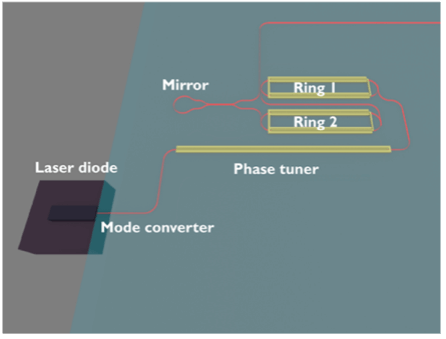Summary
In this project we develop a novel infrared camera with low noise and high detection efficiency for biomedical applications of optical coherence tomography (OCT) using quantum materials. OCT is a technique used to image the back of the eye and allow for the diagnosis of detrimental eye conditions, for e.g., macular degeneration, diabetic retinopathy and glaucoma. It can also be used for early detection of Alzheimer’s disease. However, current OCT systems are limited by their low sensitivity and spatial resolution. To provide more precise early diagnosis of potentially blinding ocular diseases, we utilize the unique expertise of a collaborative team of researchers to develop an infrared camera with sub-micron resolution and single-photon sensitivity: design and nano fabrication of quantum sensors (Reimer), design and fabrication of CMOS electrical read-out circuits to make the camera (Karim and Levine), and extensive knowledge and research expertise in the area of OCT (Bizheva). At the heart of the infrared camera is a single photon detector recently developed through another TQT-supported project, Next Generation Quantum Sensors. This sensor is based on nanostructured arrays of tapered semiconductor nanowires and is capable to detect light with high efficiency, speed, and timing resolution over an unprecedented wavelength range from the UV to infrared, all while operating at room temperature. This sensor will be integrated into a prototype camera and into existing OCT systems to realize enhanced OCT images of the human retina and cornea in-vivo.
Related Content

Chiral Quantum Antenna Based on Multilayer Metasurface
Summary Individual atoms can act as stationary qubits and thus serve as nodes in quantum computing networks or as memories for quantum repeaters. However, to successfully use qubits based on single atoms suspended in free space, photons emitted by a single atom need to be efficiently collected. Conventionally, this can be done with high […]
September 20, 2018

Visible wavelength external cavity diode lasers in photonic integrated circuits for atomic technologies
Atoms can be controlled by manipulating their internal states using agile, quiet and reliable laser sources. An external-cavity diode laser (ECDL) is a crucial enabling technology to realize such laser sources since it allows for the narrowing of the linewidth of a laser diode and precise tuning of the laser frequency. This project aims to […]
April 19, 2023

Two-Dimensional Quantum Materials and Heterostructures
Two-dimensional (2D) layers just one atom thick can be stripped from certain materials, such as graphene.
June 1, 2017

Towards large area, resonant quantum tunneling diodes by continuous Langmuir transfer of exfoliated 2D materials
Summary Atomically thin 2D materials constitute promising building blocks for quantum devices due to their exotic, layer-dependent electronic properties. The ability to stack these materials in alternating layers enables heterostructures to be built in almost limitless combinations and over small enough length scales to observe quantum phenomena. So far though, practical implementation of devices based […]
April 1, 2020


